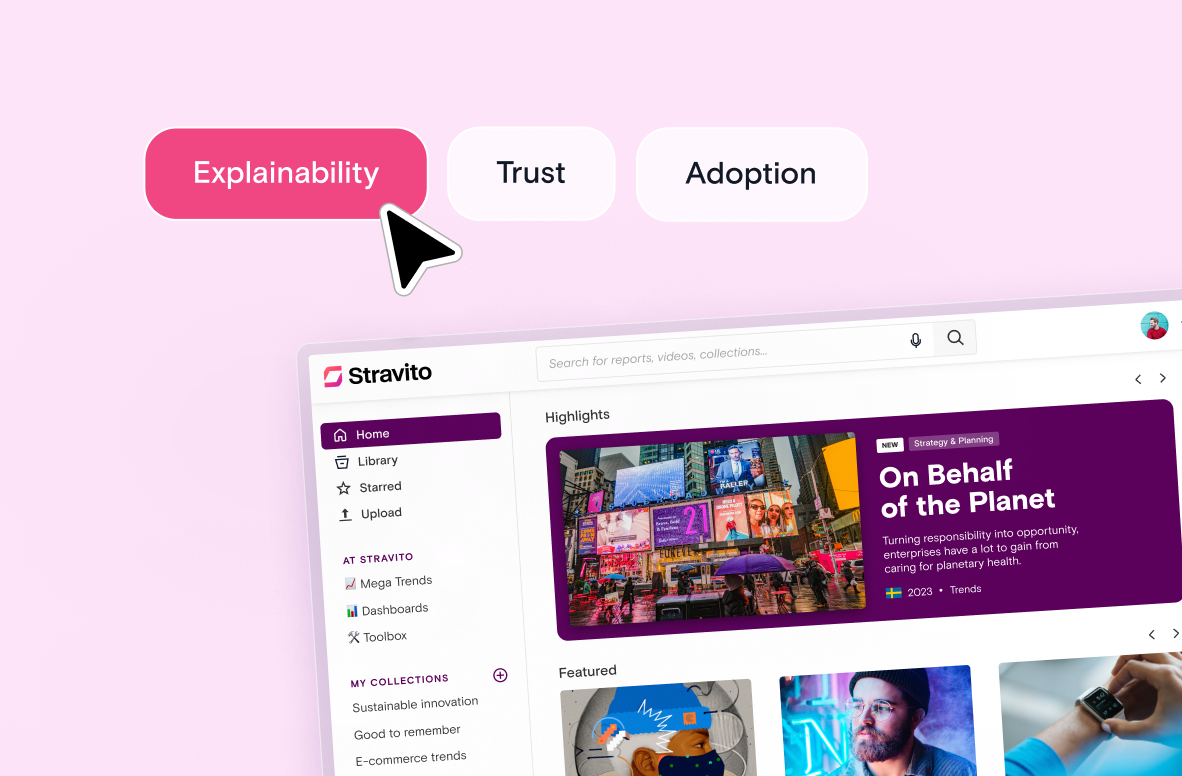You built the repository. You tagged the research. You launched it with a smile.
And then… no one used it.
If that sounds familiar, you’re not alone. Research repositories were supposed to make insights accessible, reduce repeated studies, and save teams from digging through folders or Slack threads.
But too often, they’ve become digital dumping grounds packed with reports, raw data, and research findings that stakeholders never touch.
Since we first explored this topic, the challenges have only grown. So have the expectations. This updated take looks at what’s really holding teams back and how to move beyond storing research toward actually delivering it.
So what needs to change? Let’s break it down for those of you short on time...
TL;DR: The main takeaways
- A research repository is only as valuable as its usage. If stakeholders can’t find what they need, they won’t come back.
- Many research repositories are built to store data, not to deliver insights. That’s why adoption often stalls.
- Teams need tools that surface specific insights quickly, not just systems that archive research reports and raw data.
- Treating research outputs like business assets, like journey maps and personas, helps connect findings to real decisions.
- A good research repository should support different types of research materials, make everything easily searchable, and enable faster access across teams.
So, how did research repositories go from must-have to mostly ignored? To understand that, we need to rewind a bit.
Why UX research repositories have become essential but rarely deliver
UX research repositories took off with a clear promise: give teams a central place to store, organize, and access past research. No more digging through email threads, shared drives, or asking around for last year’s insights.
Early efforts relied on tools like Airtable, Confluence, or SharePoint. Later, specialized research repository tools like Dovetail and Condens made it easier to manage research studies, tag raw data, and keep detailed findings in one place.
For a while, it worked. Researchers uploaded reports, created structure, and built libraries full of research insights.
But somewhere along the way, something got lost.
Despite the setup, adoption outside the research team stayed low. Stakeholders didn’t self-serve. Product teams kept asking the same questions. Insights went unused.
The problem? Most research repositories do a great job at storing knowledge, but a poor job at delivering it.
Instead of helping teams uncover themes or spot trends, they become digital storage closets.
And that leads to common signs of a stalled repository:
- Low engagement from non-researchers
- Repeated requests for research that already exists
- Valuable findings buried in PDFs or slide decks
- Little connection to daily product or marketing decisions
When that happens, even the best research ends up gathering digital dust.
Let’s look at why adoption breaks down and what’s standing in the way across different teams.
What stops research repositories from being used across teams
You can have the most detailed repository in the world, but if no one outside your team uses it, it’s not doing its job.
The truth is, most research repositories are built with researchers in mind. Not product teams. Not marketing. Not sales. And definitely not time-strapped execs.
That creates a gap. While UX teams see a structured library of research efforts, stakeholders often see a wall of documents they don’t know how to navigate.
Here’s where things start to break down:
- Too much structure, not enough guidance. Repositories are full of research materials, but without clear summaries or searchable tags, they’re hard to use.
- Not integrated into daily workflows. Most stakeholders don’t open a repository unless they have to. If it’s not part of their process, they won’t adopt it.
- No clear path to the right insights. When teams can’t quickly find specific insights or key data, they give up and move on.
A good research repository doesn’t just store research data.
It helps different teams quickly find answers, uncover patterns, and apply insights to real decisions.
And to do that, it needs to be built for more than just researchers.
Turning research outputs into business-ready assets
Not all research is meant to be a 30-page slide deck. Some of the most powerful outputs (like journey maps and personas) are also the most overlooked.
These aren’t just deliverables. They’re decision tools. When shared and used across teams, they help translate raw data into action.
Personas, for example, give product and marketing teams a clear view of who they’re designing for.
They distill user insights into something memorable: motivations, behaviors, and goals.
Customer journey maps go a step further. They show what people experience, think, and feel at every stage. And when done well, they reveal gaps and opportunities that no sales call or NPS score ever could.
Here’s why these research outputs matter:
- They bring detailed findings to life in a way that’s easy to understand.
- They create alignment across product, marketing, and design.
- They help teams prioritize based on real user needs, not guesses.
But to drive real value, these assets need to be easy to access, not buried in a shared drive or forgotten in a presentation.
If your research repository makes it hard to find or share specific insights like these, your team is missing a key opportunity to influence decisions at scale.
Personas and journey maps only make an impact when they’re seen, used, and remembered.
That’s why the next step is smarter delivery, not more storage.
From storing research data to delivering research insights
There’s a big difference between collecting research and making it usable.
Most research repositories do the first part well. They store documents, house raw data, and offer some structure.
But storage isn’t the goal; access is.
When research lives in a centralized database but still requires manual digging, stakeholders disengage. They don’t want to sift through folders or guess what keywords to search. They want answers. Fast.
To truly deliver insights, a research repository should help teams:
- Find what matters, fast. That means making documents easily searchable by topic, region, audience, and more.
- Surface specific insights. Not just a file, but the exact quote, chart, or stat that answers a question.
- Analyze data more effectively. Especially when comparing results across projects, timelines, or user groups.
In short, it should help people use the research, not just know it exists. Because when insights are buried, so is their value.
Next, let’s look at how to structure a user research repository that actually works for everyone.

Even the best research doesn't have impact if it's not discovered ...
See how Stravito can help
How to structure a user research repository that actually works
If your research repository is hard to navigate, people won’t use it, no matter how much valuable research it holds. Structure matters. But not just for organizing. For delivering insights to the people who need them.
Start by thinking beyond the research team and ask yourself these questions:
- What do product managers need?
- What will marketing search for?
- How might a new hire or exec browse through research materials?
A good structure supports quick discovery, not just detailed storage.
Here are a few best practices:
- Use global tags. Tags like region, product, or user group make it easier to filter across different types of research.
- Include context, not just content. Every study should include why it was done, who participated, and how the data was collected. Add consent forms, audience overviews, and timelines when relevant.
- Make summaries a standard. Not every stakeholder will read a full deck. Clear takeaways help bridge that gap.
The goal isn’t just to document your research process. It’s to make insights accessible to the people who need them, when they need them.
So once your structure is in place, what comes next? Choosing the right tool to support it. Let’s explore what to look for.
Choosing the right research repository tools for your organization
Once your structure is clear, the next step is choosing the right tool to support it.
And here’s where many teams run into trouble.
Generic platforms might offer basic file storage or tagging. But they’re rarely built with the needs of UX teams, insights managers, or cross-functional stakeholders in mind.
That’s why it’s worth investing in a user research platform that’s purpose-built to support research workflows.
Here’s what to look for:
- Search that understands your intent. Not just file names or tags but natural language search that brings up the right documents even if the wording doesn’t match exactly.
- Support for different research formats. From slide decks and PDFs to video clips and audio snippets, your tool should handle all your research materials with ease.
- Easy onboarding and adoption. If your platform isn’t intuitive, it risks becoming shelfware. The best tools make insight delivery feel as smooth as using Spotify.
Stravito was built with all of this in mind.
Here are some resources we think you'd benefit from:
- If you're comparing options, this overview of the best UX research repository tools can help you weigh what matters most.
- And if adoption has been an issue in the past, this webinar on why most research repositories fail breaks down common missteps and what successful teams do differently.
But even with the right tool in place, one thing still makes or breaks success: getting your stakeholders on board.
Getting stakeholder buy-in for better research adoption
The best research repository in the world won’t matter if no one outside the insights team uses it. That’s why stakeholder buy-in isn’t optional; it’s essential.
Many research projects stall at the handoff. Researchers conduct studies, synthesize findings, and upload detailed reports.
Then... silence.
Not because the research isn’t valuable, but because it never lands in front of the right people, at the right time, in the right format.
So, how do you get stakeholders to actually use your repository?
- Start with their needs. Talk to product managers, marketers, and execs. What questions are they trying to answer? What types of insights do they value most?
- Integrate research into their workflows. Push insights through the tools they already use, and not just into a standalone platform.
- Make everything easy to find. Specific insights, past research, and key data should be just a search away without being buried in folders.
- Show the value. Help teams connect insights to business outcomes. That’s how research earns a seat at the table.
And remember, research adoption is about trust, timing, and accessibility, not just visibility!
Let's wrap things up with what it really means to move beyond the research repository.
Over to you: Build a repository your whole organization can use
Research teams are doing incredible work. But without the right systems, even the most valuable insights can fade into the background.
You’re not trying to build a better research repository, but create something people actually want to use. A central place that makes research easier to find, easier to understand, and easier to apply across product, marketing, strategy, and beyond.
When you treat research like a living asset, not a final deliverable, it becomes part of the decision-making process. And that’s when your work starts to shape products, influence roadmaps, and drive real change.
So if you’re rethinking your approach, start here:
Focus on delivery. Focus on usability. And most of all, focus on the people you’re doing this for.
Explore how Stravito helps insights teams deliver the right knowledge to the right people, right when it matters.
Request a demo today because your research deserves to be seen and used.
Frequently asked questions
What makes a good research repository?
A good research repository doesn’t just store research data; it makes it easy to find, understand, and apply. Look for platforms that offer smart tagging, natural language search, and support for different types of research materials.
How is a research delivery platform different from a traditional repository?
Most traditional repositories focus on storage. A research delivery platform prioritizes access, usability, and adoption. This helps teams uncover themes, surface key insights, and apply findings across the organization.
How can we increase adoption of our research repository across different teams?
Start by understanding your stakeholders. Make insights accessible in the tools they already use, highlight specific insights that matter to them, and structure your repository to support quick discovery. You don't want this to just be documentation.
Should we build or buy a research repository tool?
That depends on your internal resources and goals. If you need fast deployment, enterprise-ready features, and built-in support for research workflows, a purpose-built platform like Stravito can save time and increase adoption from day one.
What types of research should we include in our repository?
Include any research that drives decisions, like user research, survey data, journey maps, personas, and even insights from sales calls or support tickets. The key is making all research efforts easily searchable and accessible from a single source of truth.

%20(5).jpg)


